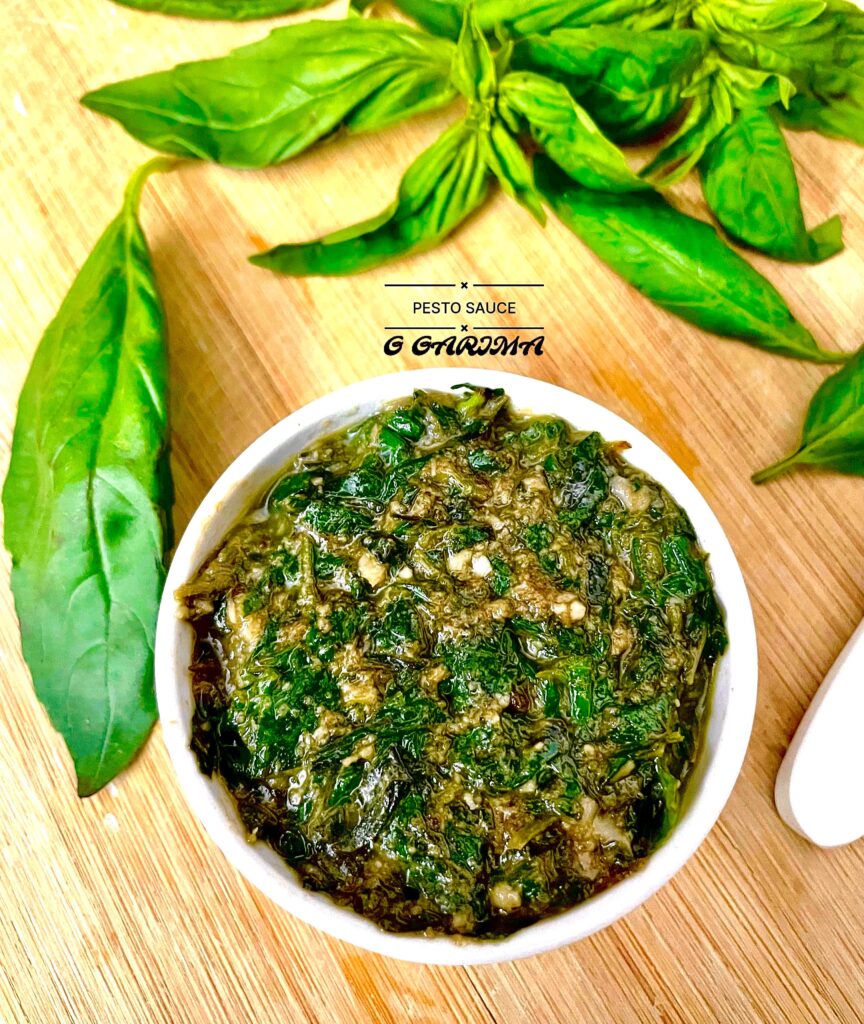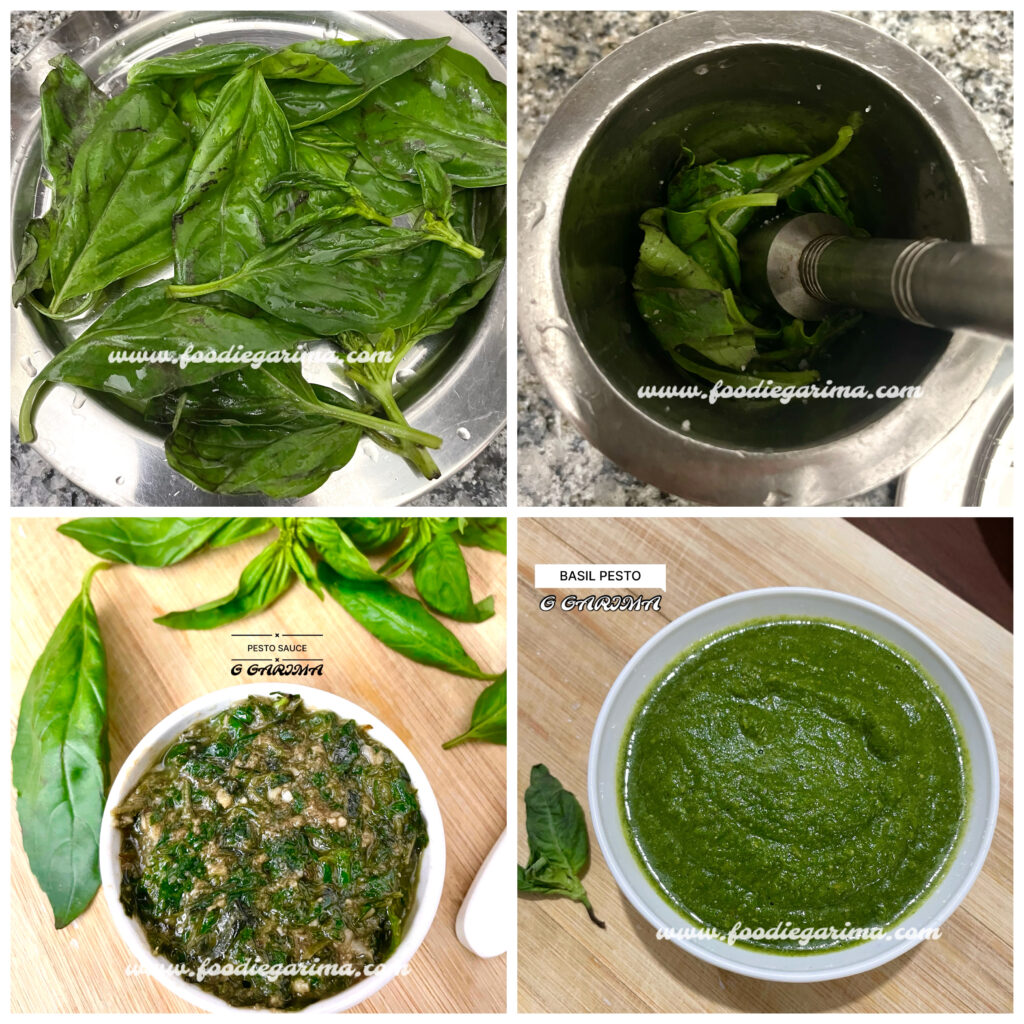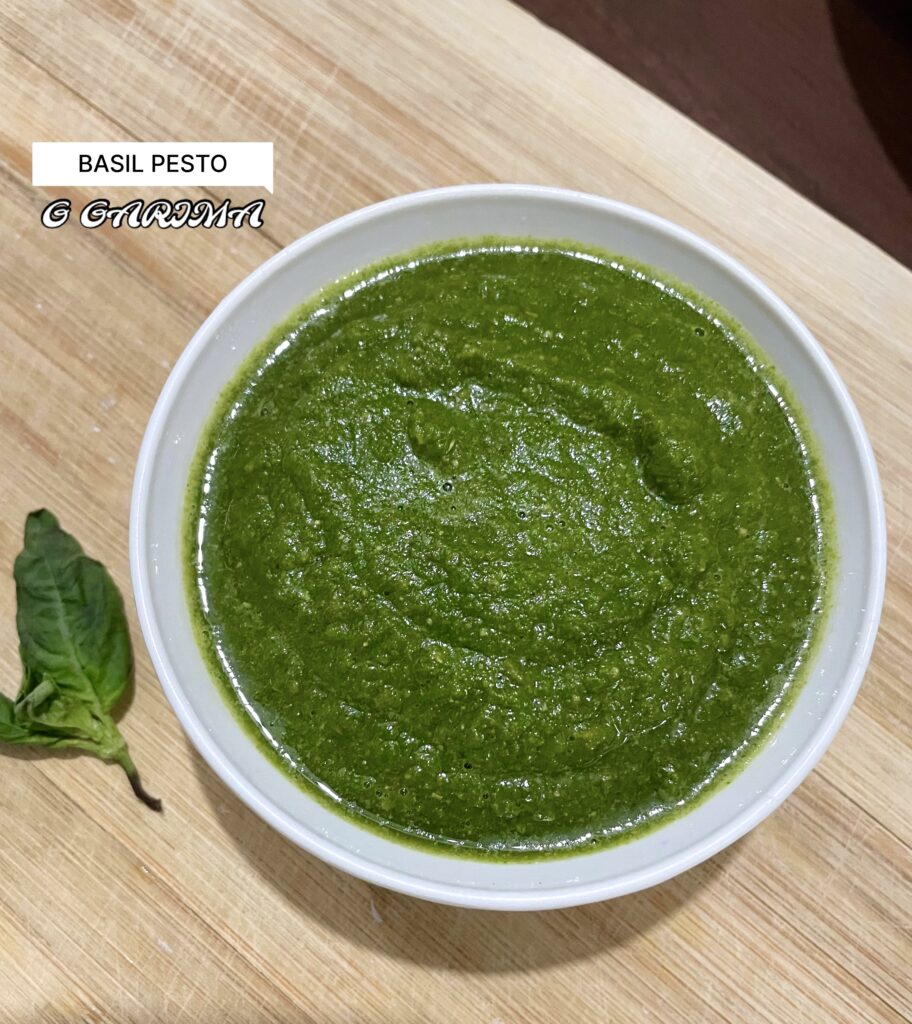5 January, 2024
BASIL PESTO RECIPE

Pesto is a traditional Italian Sauce primarily made with fresh Basil Leaves, Pine Nuts (for sometimes Walnuts), Garlic, Parmesan Cheese, and extra virgin Olive Oil. These ingredients are crushed or blended together to create a thick, aromatic paste. This Italian-origin condiment is renowned for its herbaceous flavor and versatility in culinary applications.

Basil: The Key Ingredient
At the heart of traditional Pesto lies fresh Basil Leaves. These fragrant leaves contribute a distinctive Peppery yet Sweet flavor, elevating the sauce’s taste profile.
Variations of Pesto
Pesto boasts numerous adaptations beyond the classic Basil-based recipe. Sun-dried Tomato Pesto, Spinach Pesto, and Kale Pesto are popular alternatives, each offering a unique taste profile and vibrant color.
The term “Pesto” originates from the Italian word “Pestare,” denoting the action of pounding or crushing. This refers to the traditional method of making Pesto by grinding the ingredients with a mortar and pestle, although nowadays, many people use a food processor or blender for convenience.
The vibrant Green Color and distinctive flavor of Pesto come from the fresh Basil, which is combined with the richness of the Nuts, the sharpness of the Garlic, and the savory essence of both Cheese and Olive Oil.
Here is a basic recipe for homemade Basil Pesto.
INGREDIENTS:
| 2 cups Fresh Basil Leaves (Washed) |
| ½ cup Parmesan Cheese (grated) |
| ½ cup extra virgin Olive Oil |
| ⅓ cup Pine Nuts (you can also use Walnuts or Almonds) |
| 3 nos Garlic Cloves (peeled) |
| Salt to taste |
| freshly ground Black Pepper to taste |
INSTRUCTIONS:

- Toast the Pine Nuts in a dry skillet over medium heat for a few minutes until they turn lightly golden. Make sure to stir them frequently to prevent burning. Remove from heat and let them cool.
- In a food processor or blender, combine the Basil Leaves, cooled Pine Nuts, Garlic Cloves, and Parmesan Cheese. Pulse a few times until the ingredients are roughly chopped.
- While the food processor is running, slowly pour in the Olive Oil in a steady stream. Continue blending until the mixture becomes a smooth paste. You may need to stop and scrape down the sides of the processor bowl with a spatula to ensure all ingredients are well incorporated.
- Blend these ingredients together gradually until achieving the desired consistency.
- Season the Pesto with Salt and Pepper to taste. Blend once more to combine the flavors.
- Transfer the Pesto to a clean jar or airtight container. If not using immediately, you can store it in the refrigerator. To prevent oxidation, you can drizzle a thin layer of Olive Oil on the surface of the Pesto before sealing the container.
Two Methods:
While preparing Pesto, there are different methods to achieve different textures and consistency. I made it in two ways. One approach involves using a mortar and pestle to create a coarse, rustic Pesto, while another method using a blender for a smoother texture.
Using a mortar and pestle is a traditional way to make Pesto that preserves the coarse texture of the ingredients. On the other hand, using a blender offers a quicker and more efficient way to achieve a smoother consistency. Both methods have their unique advantages.
Enjoy your homemade Pesto tossed with Pasta, spread on Sandwiches, used as a Dip, or incorporated into various recipes for added flavor!


Culinary Uses of Pesto
Versatility is Pesto’s forte. From Pasta dishes to enhancing the flavors of Sandwiches and Salads, Pesto offers a delightful burst of flavor. Experimentation knows no bounds – try it as a Marinade, Pizza Sauce Base, or even in Soups and Dips for an innovative culinary experience. Its fresh and herbal taste makes it a popular condiment in Italian cuisine and is widely appreciated globally for its delicious and aromatic qualities.

Pesto’s journey from its Italian roots to becoming a global culinary sensation is a testament to its adaptability and universal appeal.